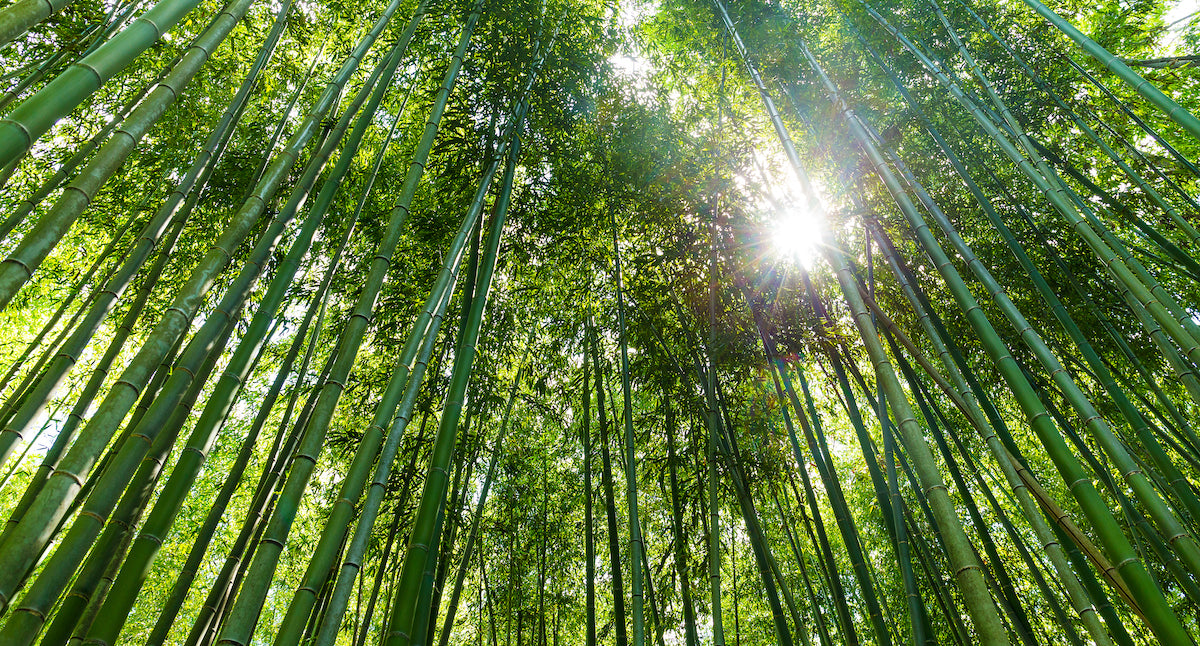
Bamboo, a soft alternative?
How much do you know about bamboo? Is it a truly sustainable alternative?
Something we already know and are aware of at Amor&Rosas is that textile consumption in the world is exaggerated, and to meet this demand, the cotton harvest has had to be modified and exploited for years.
For this reason, alternatives in different fibres have been sought to meet this demand.
Bamboo, like others, is a great alternative to cotton fibers; it has many benefits for both the skin and the environment.
The advantages include:
- It is extremely soft, softer than cotton and silk, due to its natural pectin component; which makes it soft and light. And the best part is, it is recyclable.
- It is also hypoallergenic, which helps the plant avoid pest attacks and keeps your clothes clean and odorless for longer, plus it is excellent for sensitive skin.
- It absorbs moisture quickly, making it ideal for exercise clothing, or very light clothing to keep you cool.
- It is chemical-free and does not require the use of pesticides for its cultivation and does not require replanting; therefore, it is an excellent alternative for its propagation, since it grows very quickly and its cultivation is not harmful to the soil where it is planted.
- In addition, it absorbs five times more carbon and produces 35 times more oxygen than a group of trees of similar size .
But let's pause, bamboo may sound like a wonderful fiber, but there's a catch; this fiber is not as magical as it seems.
Because of bamboo's properties, farmers have been busy clearing forest areas to make way for bamboo cultivation, which causes a huge carbon footprint and decreases biodiversity in these fields. And even though bamboo does not require the use of fertilizers, as demand increases, they will be added in exchange for greater profits.
And once the production of the fabric begins, its benefits are lost; it can be manufactured mechanically or chemically.
When done mechanically it is similar to linen, but as it is such a rough fibre it requires a lot of labour, which makes it time-consuming and expensive.
And if it is made chemically, it is obtained through a very toxic process, it is the same process used to make rayon fabric.
So as we already know, bamboo can be both a miracle fiber and a harmful one.
At Amor&Rosas we are aware of these implications, and we recognize our responsibility to the environment. But as with everything in life, there will always be advantages and disadvantages.
Nowadays, bamboo is a good alternative in certain markets, it is excellent for bedding and ideal for use in sportswear; although, as it is an expensive fibre, it cannot completely replace cotton. Often, fibre combinations are made to be able to use it in their production, creating fibres of 50% cotton / 50% bamboo.
So is it the best alternative? No, but it is a good option if consumed consciously; if we use any fibre in excess it loses its purpose, whatever it may be. Therefore we should take advantage of it and use it in moderation.
Bamboo is increasingly being used in clothing today, and has the potential to become a popular fiber.
The importance here is to be informed and aware of the implications of our consumer habits, in order to make ethical and educated purchases.
Illustrations by Iratxe Ranz


